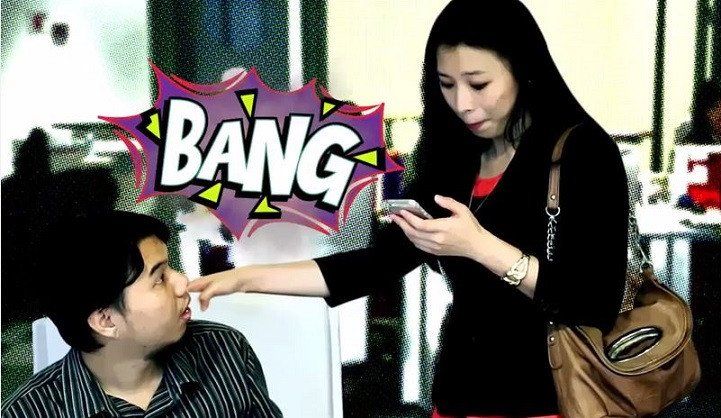Learning Styles Are A Myth!

How would you describe your learning style? Are you a visual learner, or do you prefer to listen?
Perhaps you enjoy learning through reading and writing, or take a more hands-on approach when developing your knowledge and skills.
Conventional wisdom has, for some time, suggested that we each learn best through one particular style.
This has been particularly embraced in the education system, where teachers have been encouraged to provide support in fostering each student’s learning according to their preference.
But this approach might be doing a disservice to students – as well as to adults who have bought into the idea – by taking away the opportunity for them to better develop their learning through a number of ways.
This might interest you: Learning To Unlearn: Be Agile Of The Unknown
In March 2017, 30 eminent scientists put their signatures to a letter sent to The Guardian (UK) to say that there is no evidence that learning through a preferred style leads to achieving better results, and that there exists “a number of problems with the learning styles approach”.
The letter goes on to add that categorising learners can lead to “the assumption of fixed or rigid learning style, which can impair motivation to apply oneself or adapt”.
Needless to say, although the issue relates to school education, and while students eventually leave formal education, many of our adult learning habits are shaped by our formative years.
The danger, then, seems to be that we could miss out on some valuable learning opportunities because an approach doesn’t fit “our style”.
See also: The Pain Of Learning
Years of employment is just a number
At Leaderonomics, we try to give our people fresh roles after a certain period of time.
It’s partly to give them a greater sense of what we’re working to achieve as a social enterprise, but most importantly to provide them with new experiences and challenges outside their comfort zones.
Oftentimes, I’m approached by people who want to hand me their CV and enquire about the possibility of joining the Leaderonomics team.
Many potential applicants will start by telling me something like, “I have eight years of working experience” – which is great for them – but it tells me nothing about what they’ve learnt or how they’ve grown.
A person can have four years of work experience and picked up numerous skills and abilities across two or three challenging roles during that time.
Conversely, someone could have carried out the same tasks in the same role at the same company for 20 years.
The second person might have spent five times as much as the first person in the workplace, but he/she might have learnt a lot less due to a lack of growth and development.
The number of years in employment is just that – a number.
Are you limiting your own potential?
“Ah, but why would you want to hire a jack of all trades but a master of none?” some might contest.
Just like the learning styles “myth”, I would suggest that, because someone has experience in more than one area, it doesn’t necessarily mean they aren’t skilled performers in all of them.
After all, history is filled with people who have been highly-skilled across four or five (or more) fields.
It’s surely our limiting and misguided beliefs that narrow our potential and minimise the possibilities we might realise if we adopted a varied approach to what we learn and how we learn it?
Read this: Are You A Multipotentialite? The World Needs You!
Pushing people outside their shells
In the past, I’ve had one or two conversations where people have protested at being offered the opportunity of a new role. “But I’m comfortable where I am now,” they tell me, and therein lies the problem!
If a teacher or leader has any duty towards those under their guidance, it’s to help people push beyond their limiting beliefs and boundaries.
I would rather have someone in my company for 10 years who has gained experience across two or three roles than someone who has spent a decade doing the same job, year-in and year-out.
On a personal level, as a leader, I’d view the latter as more of a disservice towards the employee than the company.
Don’t get me wrong, doing anything outside our comfort zones is scary – few people enjoy being taken away from what they know. As the saying goes:
Comfort zones are beautiful places, but nothing ever grows there.
Are you ready for a shake-up?

Ready for a shake-up?
Of course, depending on the person, teachers and leaders have to use their judgment in how they encourage others to learn.
Throwing a shy and reticent person into the deep end when they’re thriving in their current role could be problematic for all concerned.
While we should encourage others to learn in new ways and seek out new experiences, we should also be mindful to each person’s circumstances and find the best way to encourage and motivate them to take the first steps into an unfamiliar territory.
Even at Leaderonomics, where we love to throw people into the deep end of a new challenge, we always make it a priority to make sure that the person is ready first.
Learning through different styles and facing what comes with new experiences are what lead us to being better tomorrow than we are today.
It’s what cultivates great ideas, creative solutions and innovative practices. It enables us to see things from entirely new perspectives.
By combining different methods of learning, we shake ourselves up and awaken to new possibilities that we would never have known from inside our comfort zones.
In conclusion
Trying out new things, taking a different approach, putting ourselves out there – sure, it can be daunting – but it can also be (and often is) an exhilarating experience.
If I had RM10 for every time someone told me, “I wish I’d done this sooner”, I would be a very rich man indeed!
Article first appeared on LinkedIn.
Leadership
Roshan is the Founder and “Kuli” of the Leaderonomics Group of companies. He believes that everyone can be a leader and "make a dent in the universe," in their own special ways. He is featured on TV, radio and numerous publications sharing the Science of Building Leaders and on leadership development. Follow him at www.roshanthiran.com








